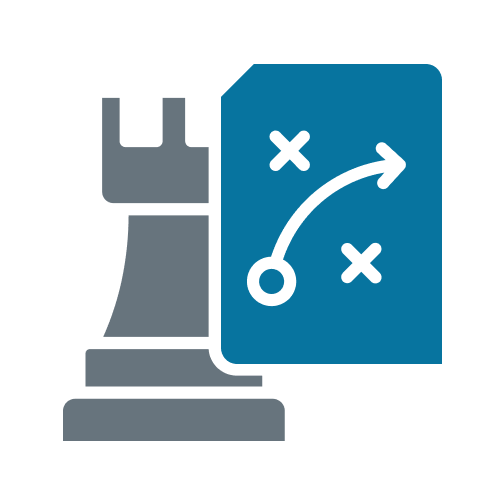How to Scale a Business Quickly has become the defining challenge for growth-minded entrepreneurs aiming to multiply impact without multiplying costs. At Champion Performance Systems, we coach leaders wrestling with how to scale a business quickly while maintaining quality, culture, and profitability. In this post, you’ll discover:
- What scaling really means (vs. growth)
- The most (and least) scalable business models
- Seven proven growth levers for rapid scale
- How Verne Harnish’s Scaling Up business model supports each lever
- Common scaling pitfalls and how to avoid them
- FAQs to clarify core scaling concepts
Scaling vs. Growth: Clearing Up the Confusion
Growth typically means adding headcount, revenue, or locations in a linear fashion—more inputs, more outputs. For example, hiring five more sales reps to drive 20% more revenue is growth. But when you ask how to scale a business quickly, you’re looking for exponential output without a matching increase in inputs.
Scale is about leverage: building systems, processes, and technology so that one unit of effort delivers three, five, or ten units of value. In the Scaling Up business model by Verne Harnish, this principle is captured by “gearing”—multiplying results without multiplying effort. Asking how to scale a business quickly means shifting from manpower-driven growth to system-driven expansion.
What It Means to Scale a Business
To scale a business quickly, remember a truly scalable business model has three hallmarks:
- Repeatable Processes: Documented workflows any trained team member can follow (Rockefeller Habits’ One-Page Plan).
- Predictable Revenue: Recurring streams—subscriptions, retainers, or licensing fees—that smooth cash flow and fuel reinvestment.
- Autonomous Teams: Self-managing units with clear KPIs (Scaling Up’s Function Accountability Chart).
At Champion, we emphasize anchoring scale in purpose. Verne Harnish urges leaders to start with “Why?” A shared mission aligns culture, accelerates decision-making, and answers the core question of how to scale a business quickly without losing your soul.
Most (and Least) Scalable Business Models
When you consider how to scale a business quickly, choosing the right model matters.
Highly Scalable Examples
- SaaS Platforms: Code is written once, sold many times—classic leverage.
- Digital Education & Membership Sites: Record content, welcome unlimited learners.
- Franchising & Licensing: Proven brand and system licensed to others, replicating success.
Models That Struggle to Scale
- Heavy Manufacturing: High capital outlay and physical constraints limit rapid expansion.
- Bespoke Professional Services: Custom engagements demand senior expertise for every dollar earned.
- One-Off Consultancies: Without productization, revenue tracks directly with consultant hours.
If you’re after business tips for entrepreneurs on how to scale a service business, consider hybrid approaches—packaging expertise into digital courses or subscription-based advisory.

Seven Proven Growth Levers for Rapid Scaling
Each lever ties back to a core Scaling Up tool, designed to answer the question of how to scale a business with precision.
Lever #1: Systematize Your X-Factor
This lever shows you how to scale a business quickly by capturing your unique strength in a repeatable process (aka systemize your x-factor).
- Detail: Map your proprietary workflow—onboarding, delivery, support—so it can be taught, measured, and refined.
- Scaling Up Tool: Use the Function Accountability Chart to assign responsibilities and close gaps.
- Benefit: Reduces bottlenecks, ensures consistent quality, and lays your business scaling strategy foundation.
Lever #2: Build a Scalable Sales Engine
This lever drives business scaling by creating a predictable lead-to-revenue flow.
- Detail: Institute daily 15-minute huddles to review lead metrics, conversion rates, and pipeline health.
- Scaling Up Tool: Adopt the Meeting Rhythm (Huddle → Weekly → Monthly → Quarterly) to keep sales momentum aligned.
- Benefit: Prevents pipeline dry spells, empowers managers with real-time data, and boosts conversion consistency.
Lever #3: Create Predictable, Recurring Revenue
Lever #3 unlocks how to scale a business quickly by smoothing cash flow and multiplying customer lifetime value.
- Detail: Transition from one-off fees to subscription models or retainer packages; bundle services into tiered, value-driven offerings.
- Why It Matters: This is the heart of how to scale a service business—productize your expertise.
- Benefit: Makes forecasting reliable, reduces churn, and funds reinvestment in people and technology.
Lever #4: Hire for Cultural Leverage
This lever accelerates how to scale a business quickly by ensuring every new hire amplifies your core values.
- Detail: Implement Topgrading interviews to identify “A-Player” candidates who share your mission and mindset.
- Scaling Up Tool: Embed core values into the hiring scorecard and onboarding rituals.
- Benefit: Lowers turnover, fosters a self-reinforcing culture, and keeps teams aligned as you grow.
Lever #5: Automate High-Value Tasks
This lever exemplifies how to reduce manual overhead on critical workflows.
- Detail: Apply the 80/20 rule to spot the tasks driving 80% of results—then automate them with CRM workflows, chatbots, or scheduling tools.
- Business Scaling Strategy: Automation frees your team for high-impact work and sharpens your competitive edge.
- Benefit: Cuts errors, accelerates cycle times, and dramatically improves margins.
Lever #6: Align Around a One-Page Strategic Plan
This lever shows how to unite every department behind a single vision.
- Detail: Craft a One-Page Plan with a clear BHAG (Big Hairy Audacious Goal), quarter-by-quarter priorities, and key metrics.
- Scaling Up Tool: Use Verne Harnish’s template to cascade objectives from the C-Suite to front-line teams.
- Benefit: Eliminates ambiguity, drives accountability, and ensures every activity ladders up to your growth goals.
Lever #7: Institute a Continuous Improvement Loop
This lever completes the formula for how to scale a business quickly by embedding a culture of relentless refinement.
- Detail: Schedule quarterly Rockefeller Habit reviews paired with eNPS pulse surveys to gather honest feedback.
- Scaling Up Tool: Leverage the “Daily Metrics” dashboard to spot trends and address performance dips in real time.
- Benefit: Keeps processes sharp, surfaces issues early, and sustains momentum as you scale.
Common Scaling Pitfalls (and How to Avoid Them)
Scaling isn’t just a checklist; it’s a high-wire act. Here are three traps that trip up even seasoned leaders—and how to sidestep them, so you stay focused on how to scale a business quickly:
1. Over-hiring Too Early
The Trap: You bring on headcount in anticipation of big wins, only to discover your processes aren’t airtight. Payroll swells, but productivity lags—and cash burn accelerates faster than revenue.
Why It Happens: Excitement around new opportunities blinds teams to underlying bottlenecks. You assume more hands equals faster delivery, rather than fixing systemic issues first.
How to Avoid It:
- Validate Core Workflows: Before recruiting, run your documented process end-to-end with your current team. Pinpoint hiccups and eliminate them.
- Pilot New Roles: Hire contract or part-time to stress-test functions. Scale headcount only after you hit defined efficiency targets.
2. Neglecting Culture Amidst Growth
The Trap: You focus all your energy on revenue and ignore the “soft” stuff—values, rituals, recognition. Soon, new hires don’t share your mission, scoreboards gather dust, and teams fragment.
Why It Happens: Culture feels intangible compared to spreadsheets and dashboards. When leaders are stretched thin, investing in team cohesion often falls through the cracks.
How to Avoid It:
- Codify Your Core Values: Translate values into daily behaviors. Create “value-check” meetings where team members share examples of colleagues living those values.
- Embed Rituals: Whether it’s a weekly shout-out huddle or a quarterly offsite, build consistent rituals that reinforce what you stand for and celebrate wins.
3. Copy-Pasting Generic Solutions
The Trap: You grab a template or read a case study and try to force-fit it into your business—only it clashes with your industry dynamics, customer needs, or team capabilities.
Why It Happens: It’s easier to imitate a “proven” playbook than to design your own. When under pressure, many leaders default to copying success rather than customizing it.
How to Avoid It:
- Diagnose Before You Deploy: Use the Scaling Up “Gap Analysis” to evaluate which tools truly align with your current stage and challenges.
- Customize with Context: Adapt frameworks to your unique customer profile, competitive landscape, and organizational DNA. Test small, learn fast, then scale the refinements.
By recognizing these pitfalls early—and taking targeted steps to avert them—you’ll sharpen your business scaling strategy, keep your teams engaged, and safeguard the momentum you’ve worked so hard to build.
How to Scale a Business Quickly: Conclusion
Mastering how to scale a business quickly isn’t about chasing shiny objects—it’s about deploying strategic levers that multiply output, anchored in solid processes and purpose. By applying the business scaling strategy above, leveraging Verne Harnish’s methodology and tools, as well as sidestepping common traps, you’ll position your enterprise for rapid, sustainable scale.
FAQ
1. What’s the difference between scale and growth?
Growth adds resources in a linear way; scale multiplies results through systems and leverage.
2. How do I know if my business is scalable?
Look for repeatable processes, predictable revenue, and empowered teams with clear KPIs.
3. When should I start thinking about scaling?
After you’ve validated product-market fit, stabilized cash flow, and proven your core process.
4. How does Scaling Up support rapid scaling?
Verne Harnish’s framework delivers meeting rhythms, tools, and metrics that systematize scale.
5. Can a service business scale like a product company?
Yes—by productizing services, creating subscription models, and leveraging digital channels.
If you’re ready to learn how to scale your business quickly, connect with one of our certified Scaling Up coaches for a FREE 30 minute call today!
If you’re ready to scale your business quickly, contact us for a FREE 30 minute conversation with one of our top-tier coaches today!










